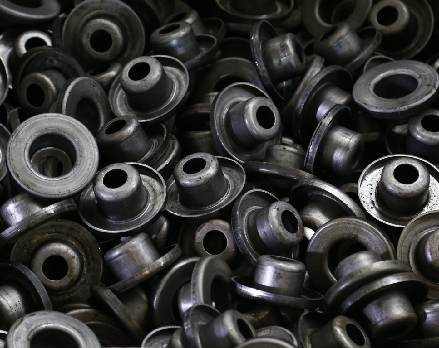 Afrikaans
Afrikaans  Albanian
Albanian  Amharic
Amharic  Arabic
Arabic  Armenian
Armenian  Azerbaijani
Azerbaijani  Basque
Basque  Belarusian
Belarusian  Bengali
Bengali  Bosnian
Bosnian  Bulgarian
Bulgarian  Catalan
Catalan  Cebuano
Cebuano  Corsican
Corsican  Croatian
Croatian  Czech
Czech  Danish
Danish  Dutch
Dutch  English
English  Esperanto
Esperanto  Estonian
Estonian  Finnish
Finnish  French
French  Frisian
Frisian  Galician
Galician  Georgian
Georgian  German
German  Greek
Greek  Gujarati
Gujarati  Haitian Creole
Haitian Creole  hausa
hausa  hawaiian
hawaiian  Hebrew
Hebrew  Hindi
Hindi  Miao
Miao  Hungarian
Hungarian  Icelandic
Icelandic  igbo
igbo  Indonesian
Indonesian  irish
irish  Italian
Italian  Japanese
Japanese  Javanese
Javanese  Kannada
Kannada  kazakh
kazakh  Khmer
Khmer  Rwandese
Rwandese  Korean
Korean  Kurdish
Kurdish  Kyrgyz
Kyrgyz  Lao
Lao  Latin
Latin  Latvian
Latvian  Lithuanian
Lithuanian  Luxembourgish
Luxembourgish  Macedonian
Macedonian  Malgashi
Malgashi  Malay
Malay  Malayalam
Malayalam  Maltese
Maltese  Maori
Maori  Marathi
Marathi  Mongolian
Mongolian  Myanmar
Myanmar  Nepali
Nepali  Norwegian
Norwegian  Norwegian
Norwegian  Occitan
Occitan  Pashto
Pashto  Persian
Persian  Polish
Polish  Portuguese
Portuguese  Punjabi
Punjabi  Romanian
Romanian  Russian
Russian  Samoan
Samoan  Scottish Gaelic
Scottish Gaelic  Serbian
Serbian  Sesotho
Sesotho  Shona
Shona  Sindhi
Sindhi  Sinhala
Sinhala  Slovak
Slovak  Slovenian
Slovenian  Somali
Somali  Spanish
Spanish  Sundanese
Sundanese  Swahili
Swahili  Swedish
Swedish  Tagalog
Tagalog  Tajik
Tajik  Tamil
Tamil  Tatar
Tatar  Telugu
Telugu  Thai
Thai  Turkish
Turkish  Turkmen
Turkmen  Ukrainian
Ukrainian  Urdu
Urdu  Uighur
Uighur  Uzbek
Uzbek  Vietnamese
Vietnamese  Welsh
Welsh  Bantu
Bantu  Yiddish
Yiddish  Yoruba
Yoruba  Zulu
Zulu High-Quality Conveyor Machine Parts for Optimal Performance
Conveyor machine parts are integral components of modern manufacturing and logistics systems, designed to facilitate the smooth and efficient transport of goods and materials. These systems are commonly utilized in various industries, including automotive, food and beverage, pharmaceuticals, and warehousing. Understanding the key parts of conveyor systems can help businesses optimize their operations and enhance productivity.
At the heart of any conveyor system is the belt or track. The conveyor belt is typically made from durable materials such as rubber, metal, or plastic, and it serves as the main surface on which items are transported. The choice of belt material depends on the specific application, load capacity, and environmental factors. For instance, food processing industries often use belts made from stainless steel or food-grade plastic to ensure cleanliness and safety.
Another critical component is the motor, which provides the necessary power to move the conveyor belt. Motors can be electric, hydraulic, or pneumatic, depending on the system's requirements. The selection of the motor is determined by factors like the weight of the items being transported, the speed of conveyance, and the layout of the operation.
Idlers and pulleys are also essential parts of a conveyor system. Idlers support the conveyor belt and help maintain its tension, ensuring that the belt runs smoothly and efficiently. Pulleys, on the other hand, are wheels around which the conveyor belt loops, playing a vital role in the system's operation. They can be adjustable to accommodate changes in tension and alignment, which is crucial for long-term reliability.
conveyor machine parts

Additionally, sensors and control systems are increasingly becoming standard in modern conveyor systems. These technologies enable automatic monitoring and regulation of the conveyor’s operation, ensuring optimal performance and minimizing downtime. For example, photoelectric sensors can detect the presence of items on the conveyor, allowing for automated sorting and routing to different destinations.
Maintenance of conveyor machine parts is just as important as their initial selection and installation
. Routine checks and service can prevent wear and tear, extend the lifespan of the equipment, and reduce unexpected breakdowns. Components like bearings, belts, and motors should be regularly inspected and replaced when necessary to maintain efficiency.In conclusion, conveyor machine parts are vital in ensuring seamless movement of products across various sectors. By understanding the roles of different components, businesses can design more effective systems, leading to enhanced operational efficiency and reduced costs. As industries continue to evolve, the integration of advanced technologies into conveyor systems is expected to drive further innovation, making them even more essential in the future.
-
Revolutionizing Conveyor Reliability with Advanced Rubber Lagging PulleysNewsJul.22,2025
-
Powering Precision and Durability with Expert Manufacturers of Conveyor ComponentsNewsJul.22,2025
-
Optimizing Conveyor Systems with Advanced Conveyor AccessoriesNewsJul.22,2025
-
Maximize Conveyor Efficiency with Quality Conveyor Idler PulleysNewsJul.22,2025
-
Future-Proof Your Conveyor System with High-Performance Polyurethane RollerNewsJul.22,2025
-
Driving Efficiency Forward with Quality Idlers and RollersNewsJul.22,2025





























